mmcartalk
Expert
- Messages
- 4,159
- Reactions
- 2,675
MM Retro-Write-Up: 1990 Mazda 323, Protege
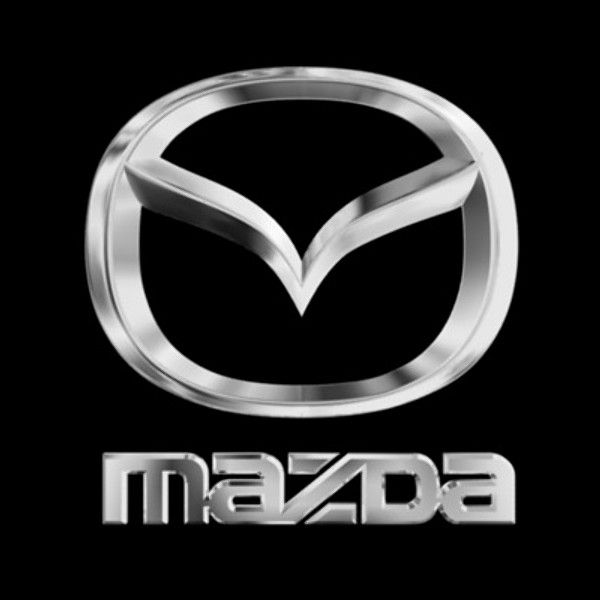
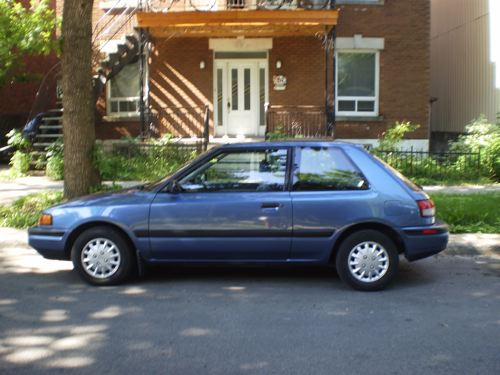
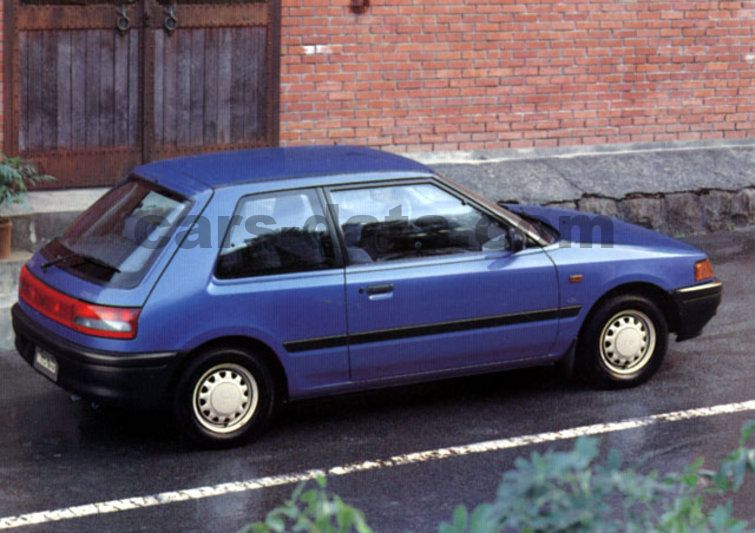
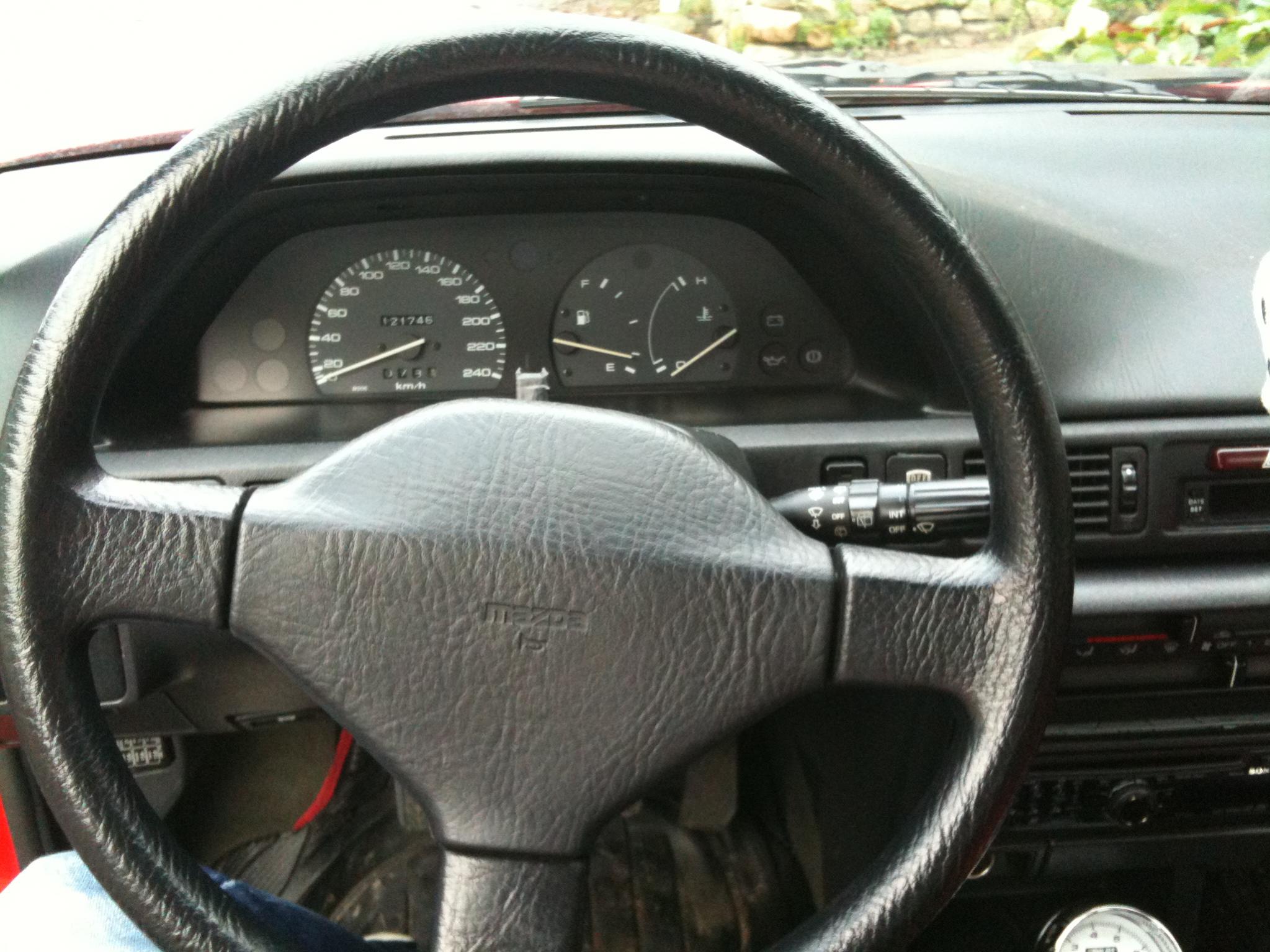

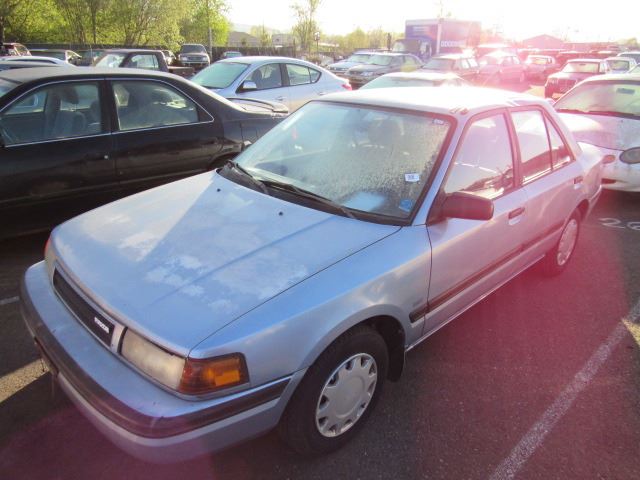

My brother and I once owned two 1990 Mazdas, both closely-related and done on the same platform....a compact 323 3-door Hatchback with a 5-speed, and a Protege 4-door sedan with automatic, which he and I both bought from the same local dealership and salesperson. For me, it was my third Mazda (and my third small Mazda sedan), and, for my brother, after five years of driving his 1995 Honda Civic Si, his first Mazda. A friend and former co-worker of mine (I don't need to use his name....he knows who he is LOL) laughed and called my Protege a 4-door Mommy-Sedan, but I didn't care...I generally liked it, it was reliable, and did the job for me.
There were many different 323 sedan/hatchback variants (sometimes known as "Familia") sold overeseas, but, for the purpose of this write-up, I'll stick to the ones sold in the U.S. market. To do an overview, both the U.S-market hatchback and sedan were resigned for the 1990 model year...the 3 and 5-door hatchbacks kept their former 323 designation, while the new 4-door sedans got a name-change to Protege.The former turbo AWD 323 hatchback was dropped..I had test-driven one of those, back in 1988, and it backed a real punch for a 1.6L turbo, but not a car I would have as a daily driver. Ford, at that time, was gaining more and more control of Mazda (later, of course, to be relinquished), and both Ford and Mercury did their own second-generation sedan/wagon versions of the 323/Protege platform, skipping the 1990 year altogether and introducing their redesigned Escort and Tracer versions in 1991. (My late mother had owned a first-generation 1988 Tracer...I might do a write-up on that car later).
Ordinarily, first-year models are sometimes troublesome, but Mazda, though not quite as bullet-proof as Honda or Toyota, had a history of building conventional piston-engined vehicles with Better-Than-Average repair records, according to Consumer Reports. I say conventional piston engines because the rotary-engine RX-7 (and the later RX-8) sports-cars were notorious for engine-durability issues, high oil consumption, starting problems, poor fuel-mileage, and a short engine-life. Some of that was because they tended to be driven hard due to the noted lack of torque at low engine speeds, some was because of inadequate engineering/materials used in the engine, and some of it was simply the design of the engine itself that, by nature, used oil in its normal operation..some oil was always drawn in through the fuel-vent-porting. In addition, the RWD layout and sports-car tires made these vehicles completely unsuited for winter. So neither me or my brother gave them a serious second look....though we did sit in and check out the also-brand-new Miata, which went on to enjoy huge success in the marketplace as a reliable, low-cost roadster. I did test-drive both the RX-7 and RX-8 some time later....steering and handling was phenomenal on both of them, but again, not a car I would own. We were both clearly too large for the Miata, which appeared designed for small-to-medium size adults, particularly in the cramped first-generation model, though one person in this forum who is 6' 3" own a later model and managed to fit in it and drive it regularly.
So, since it was getting around the time for both of us to move on (back then we typically kept a car about 5 years), I went shopping with my brother for a new small Japanese-sourced hatchback (for reliability). We went around and checked out a few vehicles (including another new Civic hatchback for him)...but, unlike with the new 1985 Civic Si he had bought five years before, this time, the dealerships wouldn't budge on price, and were rather arrogant in their demeanor. My brother was not satisfied with any of their offers (if you want to call it that), so he politely said have a nice day, and I backed him up.
So, one day, I was out alone doing some looking, and I found a nice new 323 three-door hatchback, with a 5-speed manual and air-conditioning....something my brother, in his cars, had not had before, in these hot, humid Washington D.C. summers (talk about cruel and unusual punishment LOL). It was a rather weird color-pattern....medium-blue metallic with a Military/Khaki-colored cloth interior. I looked it over and examined it carefully, took it for a test-drive (it passed), and was VERY pleased with the sales-rep we was talking with. I forgot his name (it was a long time ago), but he was a big burly fellow that was at least a cripple of inches taller than I was...and I was a good 6'2" and well-north of 260. He offered to let me test-drive anything on the lot, but I told him it was for my brother, not for me. I went home, called my brother, told him I think I had found something for him at a reasonable price, and suggested he come and look at it, which he did. He was also very pleased with our sales-rep...none of the B.S. the Honda shops were trying to give him. So, he took it out for a test-drive, liked it, came back, and we talked a deal. We both went home happy with the car and the guy who sold it to us....he got my own business a couple of months later when I came back and bought a new Protege from him....and probably more business when I referred customers (including a couple of my co-workers) to him. Later, he moved to a joint VW/Mazda dealership across the river in suburban Maryland, so he got a chance to sell VWs, too.
As I said earlier, both my brother's 323 and my Protege were done on the same platform, and had many similarities, particularly in the dash/controls, chassis, and engine, although his was a 5-speed manual and mine was the 4-speed automatic. Mine was a somewhat more conventional color-combination...a silvery-blue metallic outside with a medium-gray cloth interior. Both had the same normally-aspirated SOHC 1.6L in-line transversely-mounted four, with 103 HP and 108 ft-lbs. of torque...which was adequate for what that type of car weighted in those days. Naturally, the response in my brother's car, with the manual 5-speed, was a little stronger than with my 4-speed automatic. But the flip side, of course, was that my car was more manageable in heavy traffic......which usually didn't mean much, since my brother had only a very short commute to work of a couple of miles. When I drove to work (on the days I wasn't on the subway), I had a good 25 miles one-way.....in D.C.'s notorious gridlock. Both cars proved generally reliable. I didn't have a significant repair till around 60K miles, when a worn gasket allowed some oil to start leaking.....I don't remember if it squeaked in under the 5/60 engine-warranty or not. Anyhow, a guy I really trusted in the Mazda service-bay (I had known him since 1984, when I got my first Mazda...he had won several Technician-Awards from Mazda)) did the job, and there was no more trouble after that. My brother did not have any significant trouble until close to the fifth year, when a front CV joint/half-shaft assembly had to be replaced (a fairly common issue in those days with FWD vehicles).
Both vehicles drove more or less like one expected a small FWD Mazda to drive...which means somewhat more driver-centered in the steering than comparable vehicles from other Japanese manufacturers....though the 323's 5-speed linkage and clutch-action did not quite equal the liquid-precision and ease found in a typical Honda Civic FWD manual, which you could shift blindfolded. By then, many manual-clutches had hydraulic-boost (one more fluid-reservoir to check under the hood), which helped prevent bog-downs and jerking while starting out. Both rode reasonably smoothly for a car of that class, and were reasonably quiet except for some engine noise....increasing road-noise from advancing tire-wear didn't seem too noticeable. The power disc/drum- brakes were effective and long-lasting. The steering on both cars was tactile and well-designed by power-steering standards, but was not quite as magic-feel as the non-power steering on my old 1984 Mazda GLC had been....which was like driving a less-expensive BMW. I wasn't terribly impressed with the paint-job and durability on either car...but that was not necessarily the fault of the manufacturer. This was around the time that the EPA was demanding that automotive paint-processes be changed to lessen or stop paint-fumes and chemicals from escaping upwards into the atmosphere, and a number of manufacturers, even with the by-then-effective clearcoat process, had problems, for a couple of years, coming up with a new process that worked well under those circumstances. With increasing mileage and customer-use, I saw paint-problems with several brands of vehicles, including Mazda, Ford/Mercury, Mitsubishi, Chrysler, and even Toyota...particularly in white and light-metallic shades.
When I bought my Protege SE, I actually liked the interior of the upmarket LX more (and it came with 4-wheel disc brakes, tachometer, alloy wheels, and a DOHC version of the SE's 1.8L SOHC engine, producing 125 HP instead of 103, but I turned it down and got the SE instead. The main problem with the LX is that, by then, they were difficult to find without sunroofs (it may have been standard on the LX....I don't remember), and there just wasn't enough headroom up front for me and my cap under the sunroof-housing. You generally could not special-order a new Mazda with exactly what you wanted (or didn't want), like you could an American-sourced vehicle from the Big Three...it was generally choose from what was on the lot, or try and work out a dealer-exchange. I also didn't particularly like the low-speed shift-characteristics of the 4-speed automatic transmission in either version...downshifts into first, coming to a stop or when accelerating from a low speed, were often bumpy...a problem with a number of Mazda automatics of the period (even more so with some Honda automatics). Upshifts out of first, though, got smoother as the transmission warmed, particularly after a long stint on the road. And there was one feature on the automatic transmission I DID like...the Mazda-exclusive "Hold" button. Press it, and the transmission will not upshift out of that gear at all. It remembers where you set it, and downshifts and upshifts automatically up to that gear, and then holds it. Many other automatic transmissions allow you to shift manually, of course, but when you come to a stop, don't upshift and downshift manual up to that point. When you put them into "Sport" shift- mode, they remain stuck in first while accelerating from a stop unless you go back into D (drive) or upshift manually. I liked the "Hold" feature because, for me, it was convenient and fit my driving-style.
We both kept our 323 and Protege for some 5 years, and then my brother went back to a new 1995 Honda Civic CX (his third Honda Civic, and second new one), and, after almost 12 years, I defected to Toyota and got a new 1995 Celica. By then, the Honda shop who had sold my brother his previous 1995 Civic was willing to sell him a new 1995 Civic CX for a reasonable sum, without markups, although the bare-bones CX model was not as pleasant to drive as the Si, and was not in as high of a demand. So, he went back to Honda....later, to Subaru, and finally to Kia, where he has been a dyed-in-the wool Kia fan for some ten years now. I had looked the the new, next-generation 1995 Protege, and test-drove one, but, for a number of reasons, did not like it at all. It was, IMO, a poor effort on Mazda's part after years of doing excellent compact cars....and another well-done Protege would not arrive again for several more years. So, after 11 years of driving Mazdas, I converted to Toyota, for several reasons, and, as aforementioned, got a 1995 Celica, which I kept for almost 6 years. By then, the guy who had sold both me and my brother our Mazdas, and treated us well on the deal, had retired, but was not forgotten.

And, as Always, Happy Car-Memories.

MM
__________________

DRIVING IS BELIEVING







My brother and I once owned two 1990 Mazdas, both closely-related and done on the same platform....a compact 323 3-door Hatchback with a 5-speed, and a Protege 4-door sedan with automatic, which he and I both bought from the same local dealership and salesperson. For me, it was my third Mazda (and my third small Mazda sedan), and, for my brother, after five years of driving his 1995 Honda Civic Si, his first Mazda. A friend and former co-worker of mine (I don't need to use his name....he knows who he is LOL) laughed and called my Protege a 4-door Mommy-Sedan, but I didn't care...I generally liked it, it was reliable, and did the job for me.
There were many different 323 sedan/hatchback variants (sometimes known as "Familia") sold overeseas, but, for the purpose of this write-up, I'll stick to the ones sold in the U.S. market. To do an overview, both the U.S-market hatchback and sedan were resigned for the 1990 model year...the 3 and 5-door hatchbacks kept their former 323 designation, while the new 4-door sedans got a name-change to Protege.The former turbo AWD 323 hatchback was dropped..I had test-driven one of those, back in 1988, and it backed a real punch for a 1.6L turbo, but not a car I would have as a daily driver. Ford, at that time, was gaining more and more control of Mazda (later, of course, to be relinquished), and both Ford and Mercury did their own second-generation sedan/wagon versions of the 323/Protege platform, skipping the 1990 year altogether and introducing their redesigned Escort and Tracer versions in 1991. (My late mother had owned a first-generation 1988 Tracer...I might do a write-up on that car later).
Ordinarily, first-year models are sometimes troublesome, but Mazda, though not quite as bullet-proof as Honda or Toyota, had a history of building conventional piston-engined vehicles with Better-Than-Average repair records, according to Consumer Reports. I say conventional piston engines because the rotary-engine RX-7 (and the later RX-8) sports-cars were notorious for engine-durability issues, high oil consumption, starting problems, poor fuel-mileage, and a short engine-life. Some of that was because they tended to be driven hard due to the noted lack of torque at low engine speeds, some was because of inadequate engineering/materials used in the engine, and some of it was simply the design of the engine itself that, by nature, used oil in its normal operation..some oil was always drawn in through the fuel-vent-porting. In addition, the RWD layout and sports-car tires made these vehicles completely unsuited for winter. So neither me or my brother gave them a serious second look....though we did sit in and check out the also-brand-new Miata, which went on to enjoy huge success in the marketplace as a reliable, low-cost roadster. I did test-drive both the RX-7 and RX-8 some time later....steering and handling was phenomenal on both of them, but again, not a car I would own. We were both clearly too large for the Miata, which appeared designed for small-to-medium size adults, particularly in the cramped first-generation model, though one person in this forum who is 6' 3" own a later model and managed to fit in it and drive it regularly.
So, since it was getting around the time for both of us to move on (back then we typically kept a car about 5 years), I went shopping with my brother for a new small Japanese-sourced hatchback (for reliability). We went around and checked out a few vehicles (including another new Civic hatchback for him)...but, unlike with the new 1985 Civic Si he had bought five years before, this time, the dealerships wouldn't budge on price, and were rather arrogant in their demeanor. My brother was not satisfied with any of their offers (if you want to call it that), so he politely said have a nice day, and I backed him up.
So, one day, I was out alone doing some looking, and I found a nice new 323 three-door hatchback, with a 5-speed manual and air-conditioning....something my brother, in his cars, had not had before, in these hot, humid Washington D.C. summers (talk about cruel and unusual punishment LOL). It was a rather weird color-pattern....medium-blue metallic with a Military/Khaki-colored cloth interior. I looked it over and examined it carefully, took it for a test-drive (it passed), and was VERY pleased with the sales-rep we was talking with. I forgot his name (it was a long time ago), but he was a big burly fellow that was at least a cripple of inches taller than I was...and I was a good 6'2" and well-north of 260. He offered to let me test-drive anything on the lot, but I told him it was for my brother, not for me. I went home, called my brother, told him I think I had found something for him at a reasonable price, and suggested he come and look at it, which he did. He was also very pleased with our sales-rep...none of the B.S. the Honda shops were trying to give him. So, he took it out for a test-drive, liked it, came back, and we talked a deal. We both went home happy with the car and the guy who sold it to us....he got my own business a couple of months later when I came back and bought a new Protege from him....and probably more business when I referred customers (including a couple of my co-workers) to him. Later, he moved to a joint VW/Mazda dealership across the river in suburban Maryland, so he got a chance to sell VWs, too.
As I said earlier, both my brother's 323 and my Protege were done on the same platform, and had many similarities, particularly in the dash/controls, chassis, and engine, although his was a 5-speed manual and mine was the 4-speed automatic. Mine was a somewhat more conventional color-combination...a silvery-blue metallic outside with a medium-gray cloth interior. Both had the same normally-aspirated SOHC 1.6L in-line transversely-mounted four, with 103 HP and 108 ft-lbs. of torque...which was adequate for what that type of car weighted in those days. Naturally, the response in my brother's car, with the manual 5-speed, was a little stronger than with my 4-speed automatic. But the flip side, of course, was that my car was more manageable in heavy traffic......which usually didn't mean much, since my brother had only a very short commute to work of a couple of miles. When I drove to work (on the days I wasn't on the subway), I had a good 25 miles one-way.....in D.C.'s notorious gridlock. Both cars proved generally reliable. I didn't have a significant repair till around 60K miles, when a worn gasket allowed some oil to start leaking.....I don't remember if it squeaked in under the 5/60 engine-warranty or not. Anyhow, a guy I really trusted in the Mazda service-bay (I had known him since 1984, when I got my first Mazda...he had won several Technician-Awards from Mazda)) did the job, and there was no more trouble after that. My brother did not have any significant trouble until close to the fifth year, when a front CV joint/half-shaft assembly had to be replaced (a fairly common issue in those days with FWD vehicles).
Both vehicles drove more or less like one expected a small FWD Mazda to drive...which means somewhat more driver-centered in the steering than comparable vehicles from other Japanese manufacturers....though the 323's 5-speed linkage and clutch-action did not quite equal the liquid-precision and ease found in a typical Honda Civic FWD manual, which you could shift blindfolded. By then, many manual-clutches had hydraulic-boost (one more fluid-reservoir to check under the hood), which helped prevent bog-downs and jerking while starting out. Both rode reasonably smoothly for a car of that class, and were reasonably quiet except for some engine noise....increasing road-noise from advancing tire-wear didn't seem too noticeable. The power disc/drum- brakes were effective and long-lasting. The steering on both cars was tactile and well-designed by power-steering standards, but was not quite as magic-feel as the non-power steering on my old 1984 Mazda GLC had been....which was like driving a less-expensive BMW. I wasn't terribly impressed with the paint-job and durability on either car...but that was not necessarily the fault of the manufacturer. This was around the time that the EPA was demanding that automotive paint-processes be changed to lessen or stop paint-fumes and chemicals from escaping upwards into the atmosphere, and a number of manufacturers, even with the by-then-effective clearcoat process, had problems, for a couple of years, coming up with a new process that worked well under those circumstances. With increasing mileage and customer-use, I saw paint-problems with several brands of vehicles, including Mazda, Ford/Mercury, Mitsubishi, Chrysler, and even Toyota...particularly in white and light-metallic shades.
When I bought my Protege SE, I actually liked the interior of the upmarket LX more (and it came with 4-wheel disc brakes, tachometer, alloy wheels, and a DOHC version of the SE's 1.8L SOHC engine, producing 125 HP instead of 103, but I turned it down and got the SE instead. The main problem with the LX is that, by then, they were difficult to find without sunroofs (it may have been standard on the LX....I don't remember), and there just wasn't enough headroom up front for me and my cap under the sunroof-housing. You generally could not special-order a new Mazda with exactly what you wanted (or didn't want), like you could an American-sourced vehicle from the Big Three...it was generally choose from what was on the lot, or try and work out a dealer-exchange. I also didn't particularly like the low-speed shift-characteristics of the 4-speed automatic transmission in either version...downshifts into first, coming to a stop or when accelerating from a low speed, were often bumpy...a problem with a number of Mazda automatics of the period (even more so with some Honda automatics). Upshifts out of first, though, got smoother as the transmission warmed, particularly after a long stint on the road. And there was one feature on the automatic transmission I DID like...the Mazda-exclusive "Hold" button. Press it, and the transmission will not upshift out of that gear at all. It remembers where you set it, and downshifts and upshifts automatically up to that gear, and then holds it. Many other automatic transmissions allow you to shift manually, of course, but when you come to a stop, don't upshift and downshift manual up to that point. When you put them into "Sport" shift- mode, they remain stuck in first while accelerating from a stop unless you go back into D (drive) or upshift manually. I liked the "Hold" feature because, for me, it was convenient and fit my driving-style.
We both kept our 323 and Protege for some 5 years, and then my brother went back to a new 1995 Honda Civic CX (his third Honda Civic, and second new one), and, after almost 12 years, I defected to Toyota and got a new 1995 Celica. By then, the Honda shop who had sold my brother his previous 1995 Civic was willing to sell him a new 1995 Civic CX for a reasonable sum, without markups, although the bare-bones CX model was not as pleasant to drive as the Si, and was not in as high of a demand. So, he went back to Honda....later, to Subaru, and finally to Kia, where he has been a dyed-in-the wool Kia fan for some ten years now. I had looked the the new, next-generation 1995 Protege, and test-drove one, but, for a number of reasons, did not like it at all. It was, IMO, a poor effort on Mazda's part after years of doing excellent compact cars....and another well-done Protege would not arrive again for several more years. So, after 11 years of driving Mazdas, I converted to Toyota, for several reasons, and, as aforementioned, got a 1995 Celica, which I kept for almost 6 years. By then, the guy who had sold both me and my brother our Mazdas, and treated us well on the deal, had retired, but was not forgotten.

And, as Always, Happy Car-Memories.

MM
__________________

DRIVING IS BELIEVING


